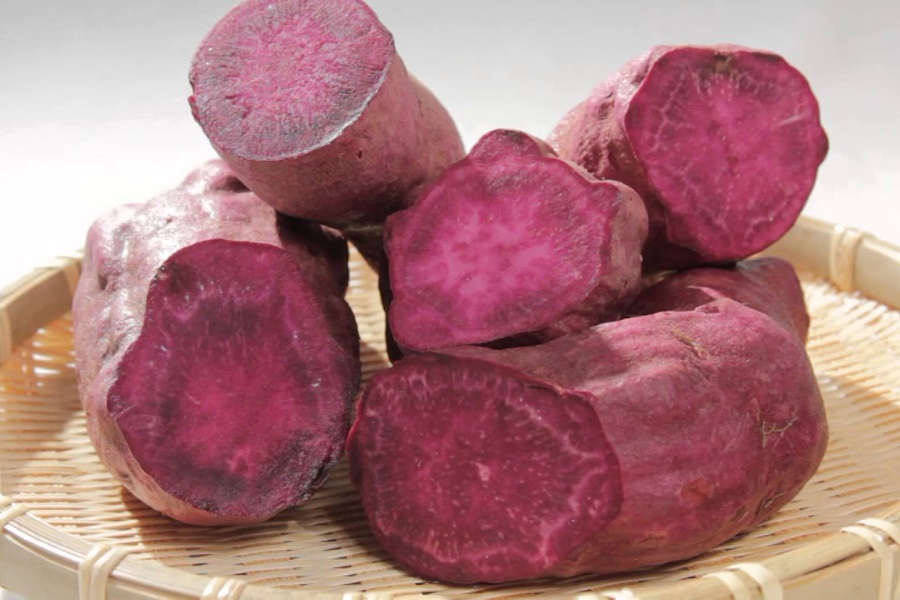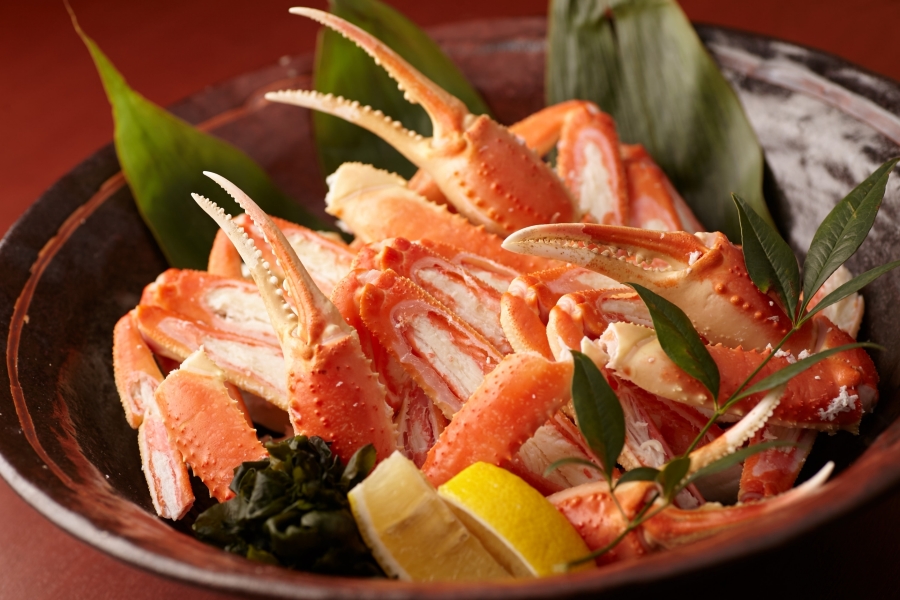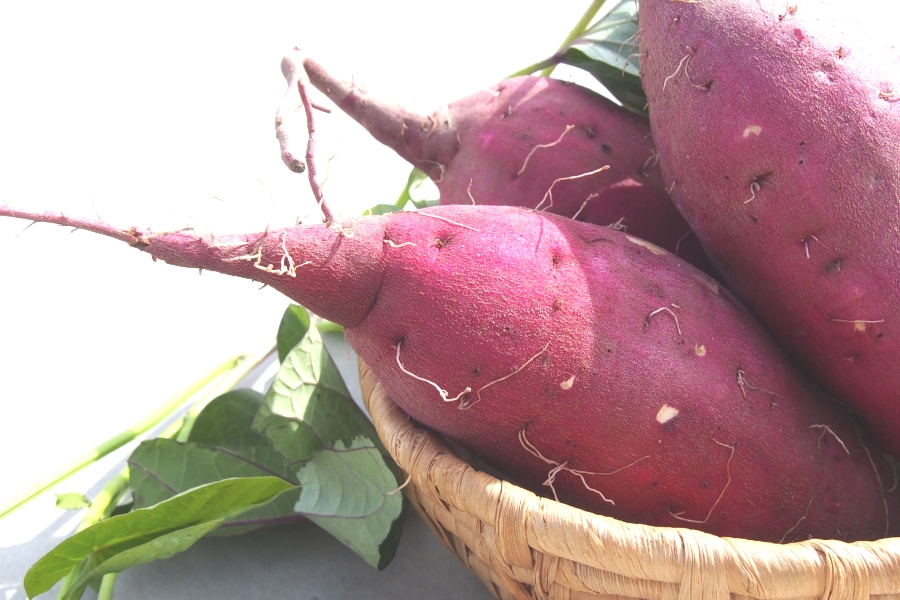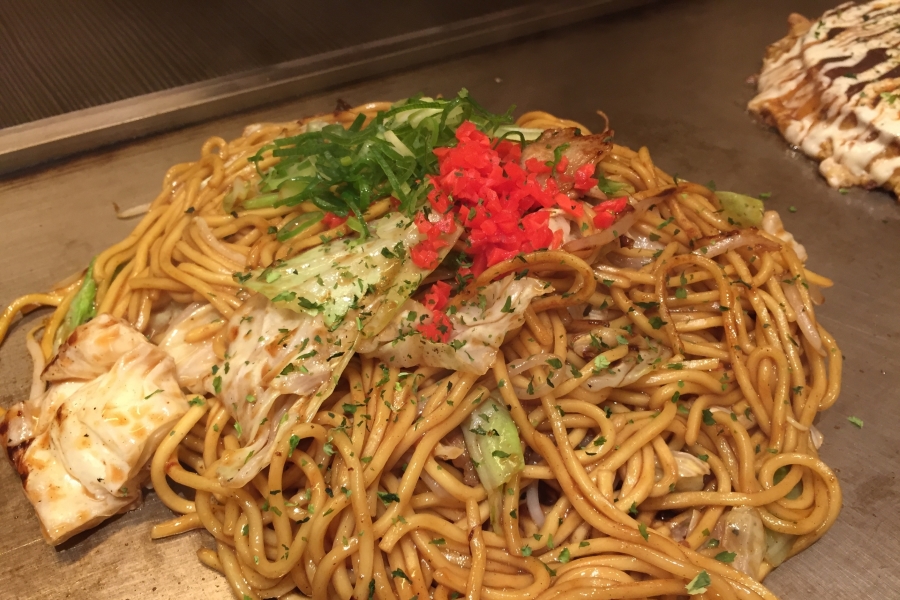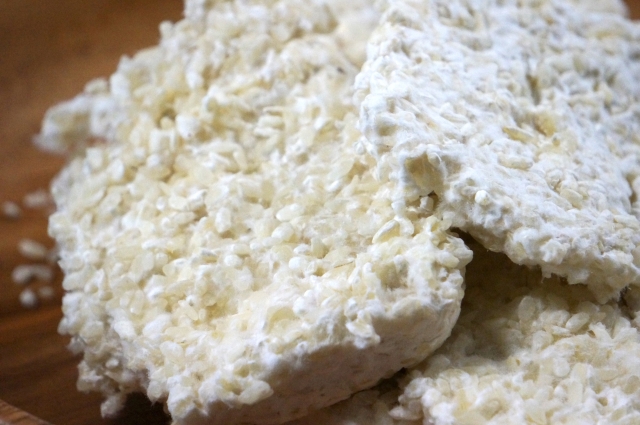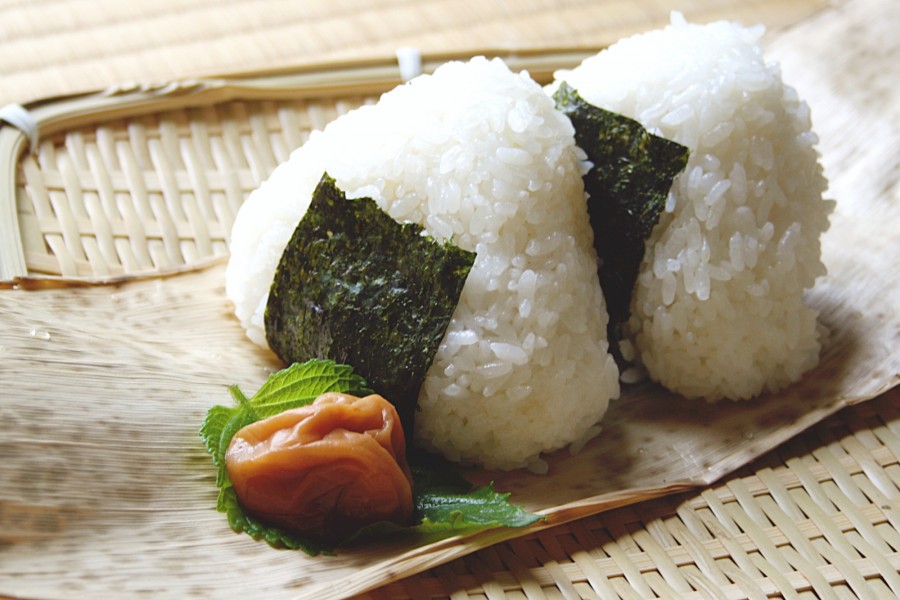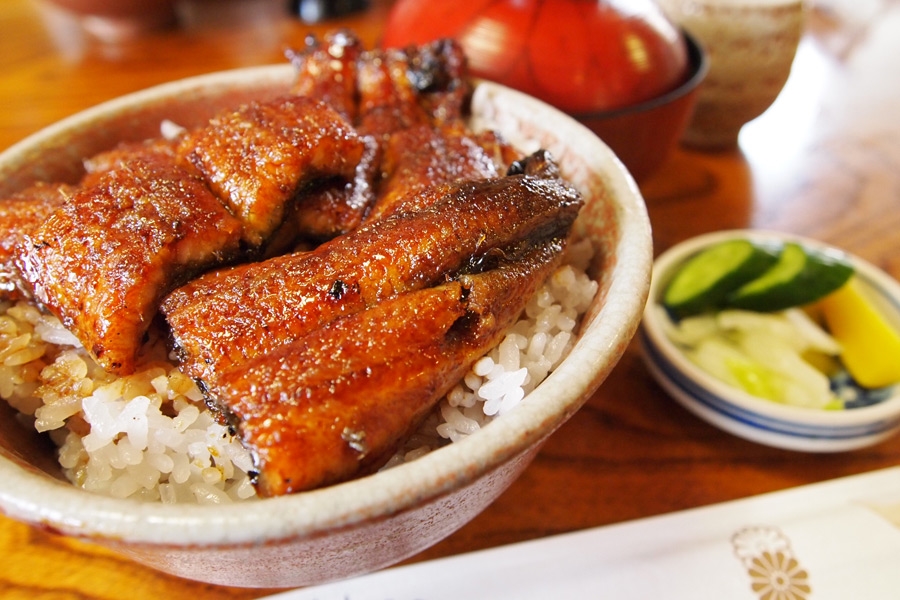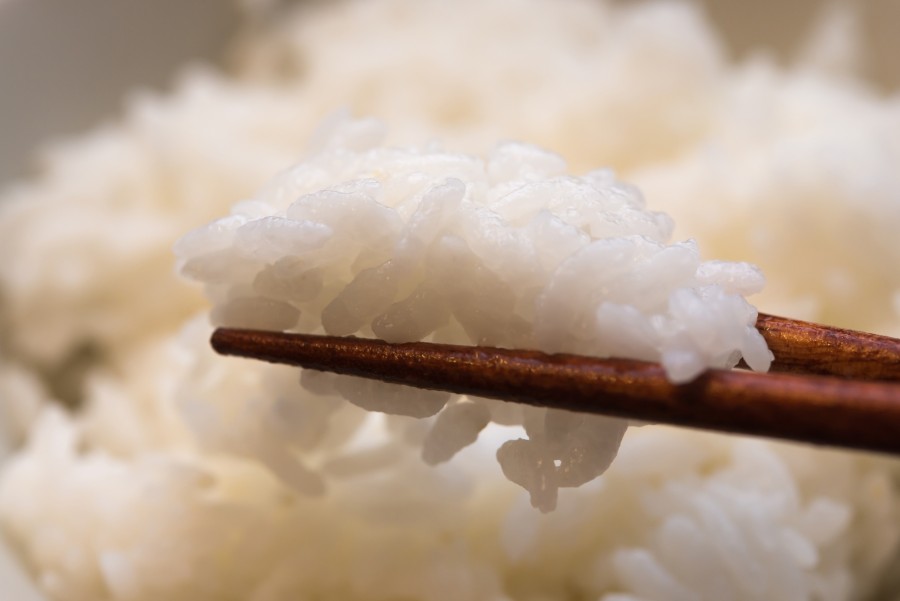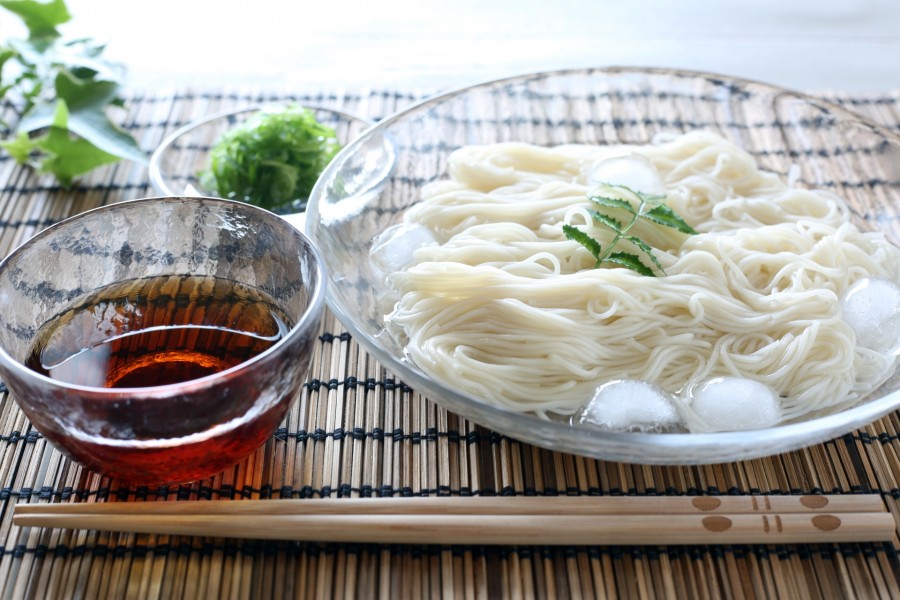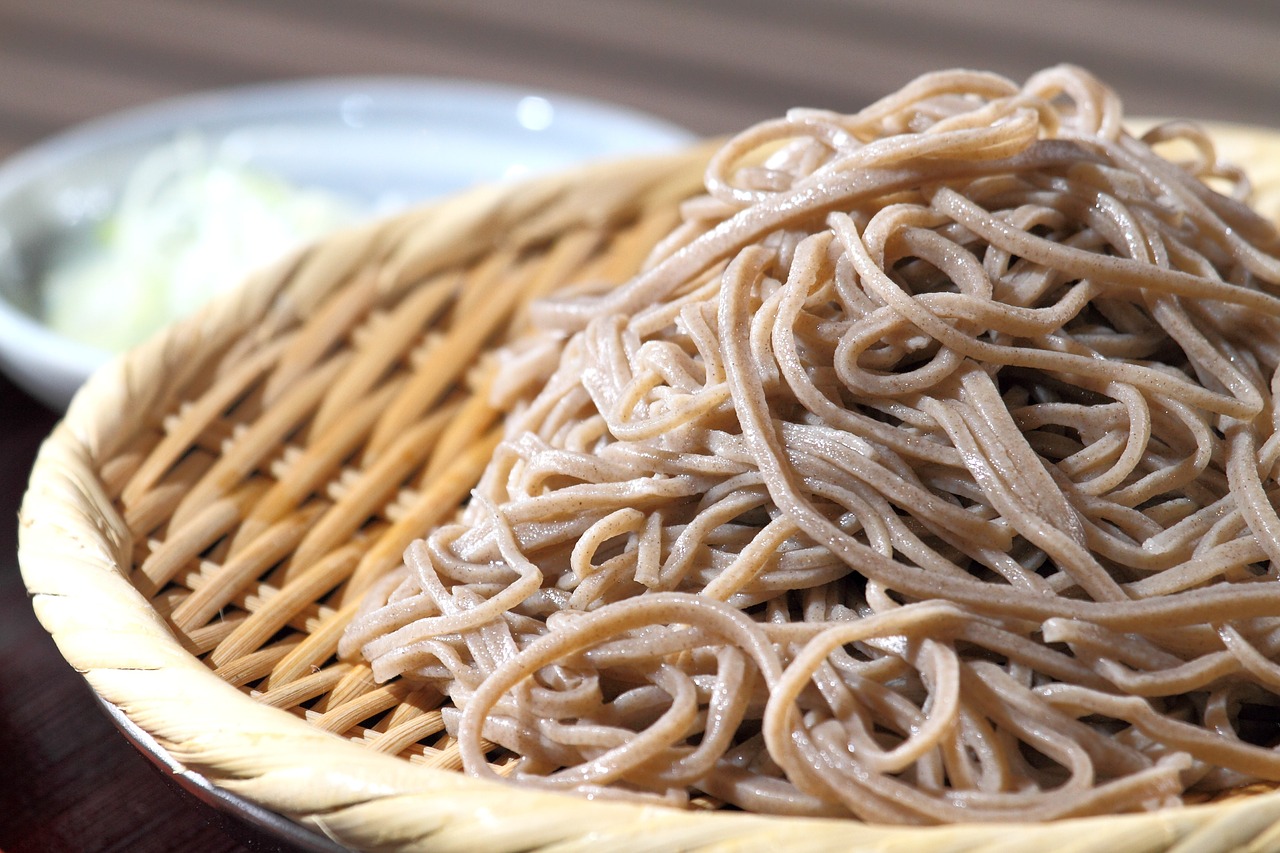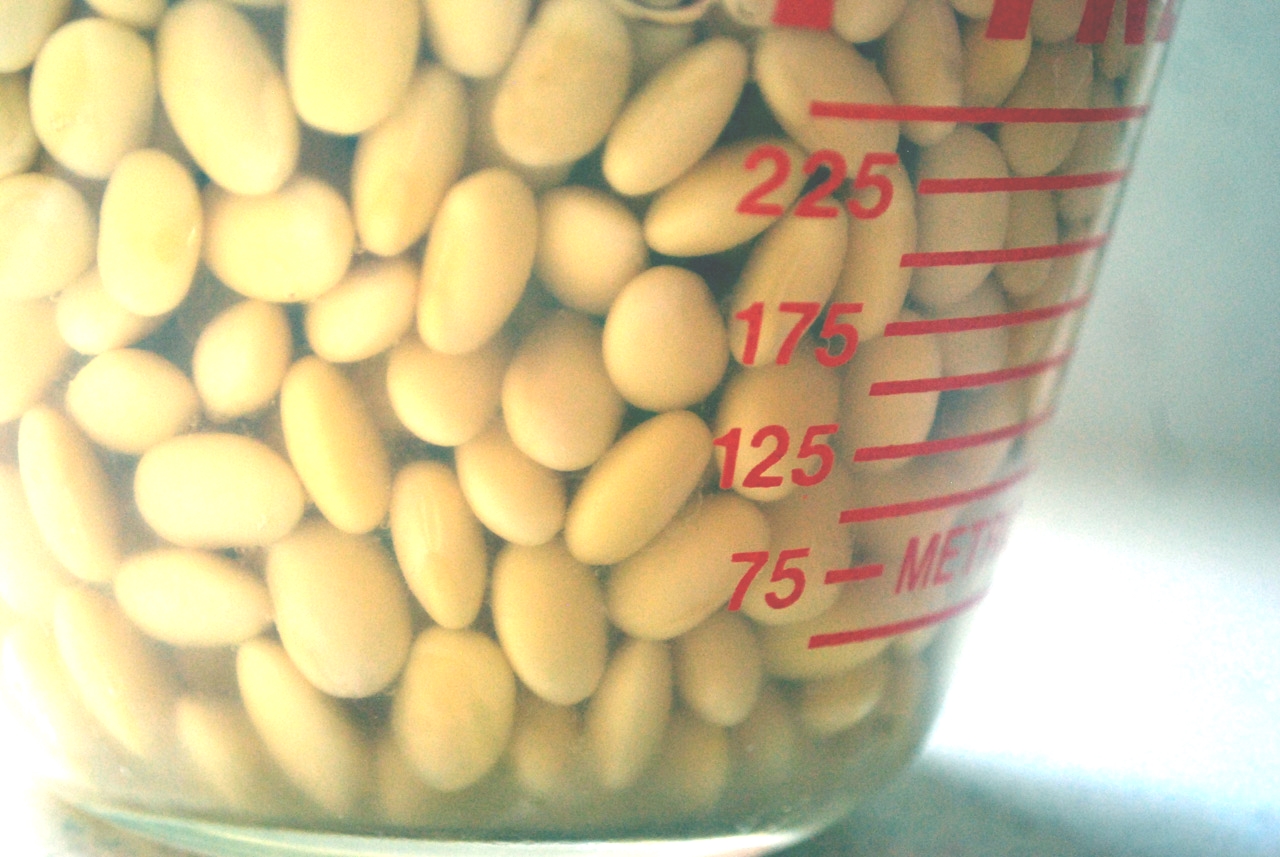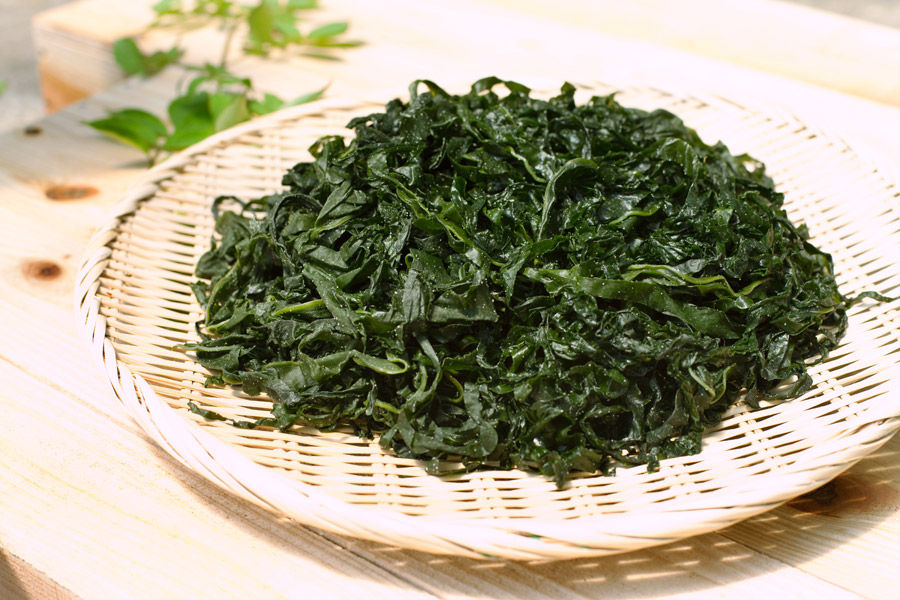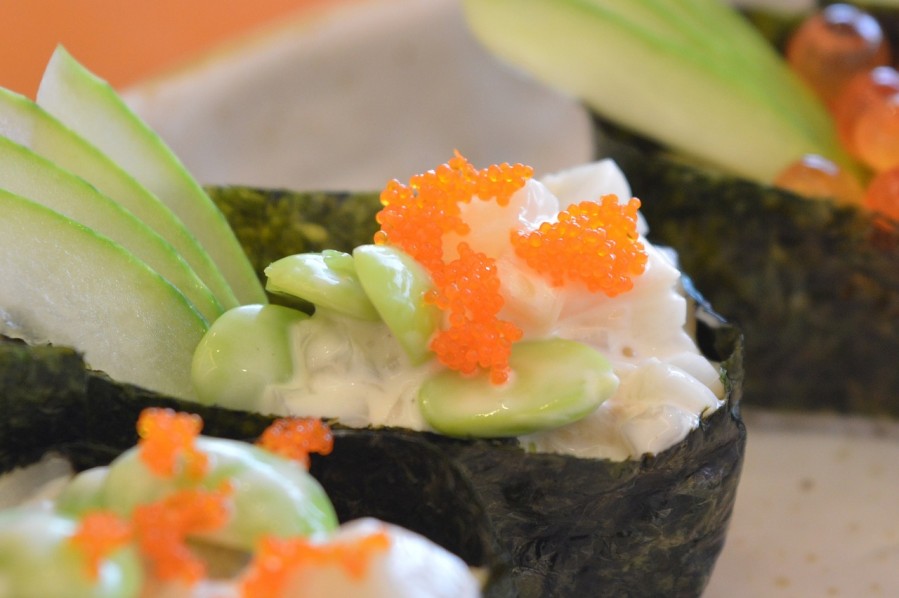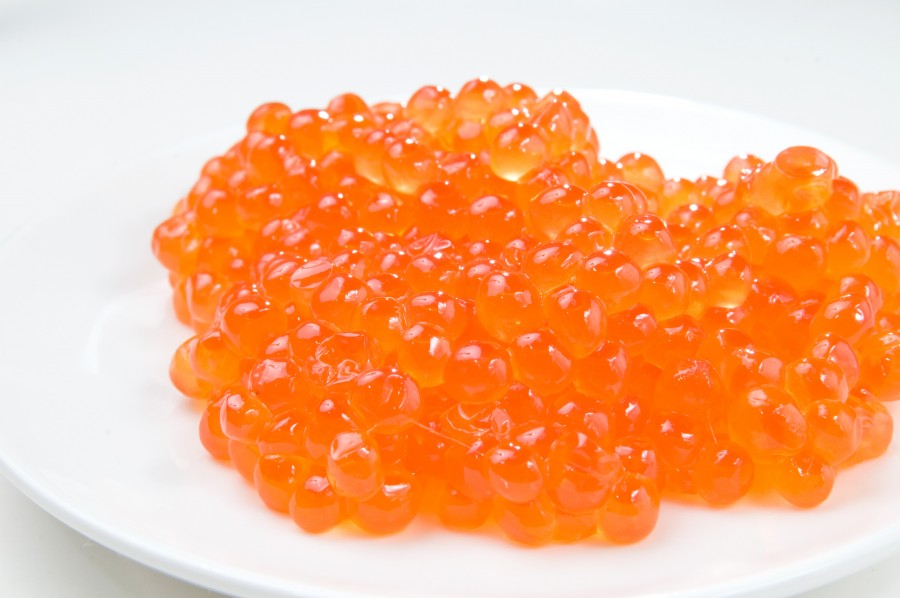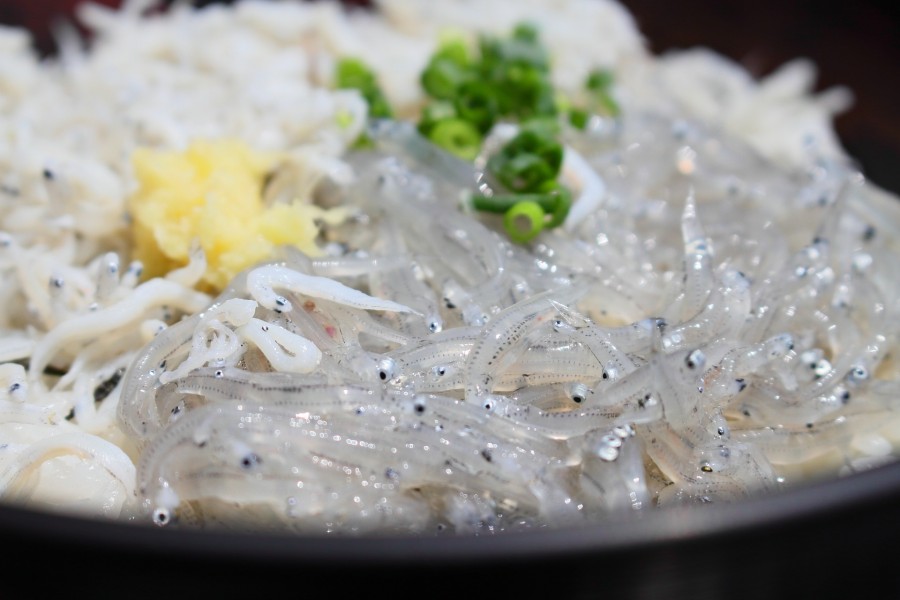A New Breed of Murasaki-imo Everyone Is Talking About: “Purple Sweet Road” At Nijiya, you find satsuma-imo shipped directly from Nijiya Farm. As you cut into the deliciously purple skin of this satsuma-imo, you find that the meat is also a beautiful purple color. The vivid purple color is due to B carotene and anthocyanin pigment, which is a type of polyphenol. It sounds good for the body, doesn’t it? Called “Purple Sweet Road,” this particular murasaki-imo (meaning “purple potato” in Japanese) is a new breed of potato registered in 2006. A cross between Naruto-kintoki and murasaki-imo, Purple Sweet Road combines the taste of Kintoki and the nutritional value ofmurasaki-imo. The pretty purple color is one secret of the popularity […]
Have you noticed a mysterious looking brown item lined up in the pickle section? It looks really strange, and for those of you who have never tried it, its appearance hardly invites you to reach for it. This is a form of pickle called “Narazuke.” Contents: What is Narazuke? Narazuke Recipe What is Narazuke? Narazuke refers to vegetables of the gourd family that are pickled in sake lees. It is said to have originated in the Kansai region of Japan. At one time, it was apparently a very expensive food that only those in the upper class could enjoy. Later, in the Edo period (1603-1868), it came to be widely consumed by the general public. It is said that the […]
Makurazaki City, in Kagoshima Prefecture, is known as Japan’s top producer of katsuobushi (smoked, dried bonito). Our Wafu Dashi stock is made with an abundance of katsuobushi, produced in Makurazaki without the use of chemical seasonings (including MSG), artificial colors, etc. Thus it boasts more savory character (umami), flavor and mellow sweetness that come from quality fish and natural ingredients. In this article we’ll talk about this additive-free Nijiya Wafu Dashi stock. Contents: “Arakibushi” – Makurazaki Brand Katsuobushi Blending Shiitake Mushroom and Konbu Dashi Stock Granular-type Dashi Stock. That’s Easy to Use Dashi Stock Recipes Pork and Onion Stir-Fry with Ginger Recipe Dashi Simmered Nira and Enoki Mashroom Recipe Daikon with Ground Chicken Recipe Lightly Simmered Asari (clams) and Asparagus […]
Zakkoku has become increasingly popular these days. Cooking regular rice with a blend of zakkoku can boost its taste and nutritional value substantially. Eating zakkoku rice can help you feel great and stay healthy every day. Just combine organic brown rice or white rice with a variety of zakkoku. Proper blending is the key to delicious zakkoku rice. Assorted zakkoku packets are also available. Contents: What Is Zakkoku? The Significance of Zakkoku Rice Kinds of Zakkoku Zakkoku Recipe What Is Zakkoku? Zakkoku is a collective term for grains of the grass family that bear small fruit seeds. There are other types of grains with similar fruit seeds that aren’t part of the grass family. These grains are called ruiji zakkoku, […]
Contents: Nijiya’s Nori Tsukudani Nori Tsukudani Recipe Nijiya’s Nori Tsukudani New items added to our popular “Nijiya Small Bottle” series are Nori Tsukudani and Nori Tsukudani with Shiitake. Nori tsukudani is made with simple ingredients-nori seaweed and seasonings; Nori Tsukudani with Shiitake has added shiitake mushrooms. Nori seaweed is rich in protein, vitamins, and minerals. We make it without MSG and thickener so you can feel its natural, smooth texture. Enjoy Nijiya homemade Nori Tsukudani on steamed rice and of course with onigiri (rice balls)! How to Cook Nori Tsukudani (Nori Tsukudani Recipe) Nori Tsukudani Rolled Egg Good for bento menu! Ingredients (Serves 2) 3 eggs 1 Tbsp. Nori Tsukudani Salt and pepper (to taste) Oil (as needed) Cooking Directions […]
Contents: Tororo Kombu is one of many processed kombu product Tororo Kombu Recipe Tororo Kombu is one of many processed kombu product There are many types of kombu (=kelp). Despite the fact that kombu is known to be rich in nutrients, many of us use it only for stock because we do not know exactly how else to use it in cooking. Tororo-kombu, also known as shredded kombu, is one of many processed kombu products. It is made from giant kelp and/or Larninaria ochotensis known as “Rishiri-kombu.” Thinly sliced pieces of the kombu are pressed by laminating and cut against the grain into thin strips. In the Hokuriku region, in particular, many varieties of tororo-kombu are available with different ingredients […]
Crab is essential for winter seafood recipes. Everyone agrees that crab is the king of winter flavors. Aren’t you filled with anticipation when you think of hot pot or kani suki (crab hot pot) on a cold winter’s day? Contents: Nijiya Sticks to Raw Crab! Jumbo Snow Crab Red King Crab How to Choose Good Crab Nutrition Value Kani (Crab) Recipes Snow Crab Cream Tomato Pasta Recipe Kani Nabe (Crab Hot Pot) Recipe Crab Rice Recipe Kani Tama Recipe Nijiya Sticks to Raw Crab! Crab in American stores is usually cooked or boiled, but Nijiya purchases raw crab not only to keep the original flavor but also to give our customers greater freedom of preparation. Crab is a seasonal food […]
Matsutake is a wild seasonal mushroom having an intense aroma, distinctive texture and natural flavor. Matsutake, grows in relatively dry soil containing few nutrients. It is found in the autumn in single-tree forests of Japanese red pine, Yezo spruce (Picea jezoensis), etc., or in mixed forests of primarily needle-leaved trees. Contents: What are Matsutake Mushrooms? How to prepare Matsutake Musrooms? Let’s taste Matsutake Mushroom simply and originally! How to cook Matsutake Mushrooms? What are Matsutake Mushrooms? The relationship between the Japanese people and mushrooms has a long history. Many pieces of mushroom-shaped earthenware have been found in ruins of the Middle Jomon Period (3500-1500 B.C.E.). The Japanese classic Manyoshu poetry anthology contains tanka (thirty-one syllable poems) featuring the matsutake mushrooms […]
The sweet potato (satsuma-imo) is native to Mexico and the surrounding tropical American region. Diploid Ipomoea trifida, which belongs to the family Convolvulaceae, has been identified as a wild ancestor of the sweet potato. Today’s sweet potatoes are believed to have been developed through artificial selection as a result of mutation and cross breeding with wild species. Whether artificial or spontaneous, a great number of sweet potato species have been created throughout the long history of its cultivation. Different regions grow varieties befitting their geographical needs. In fact, sweet potatoes are grown in most of the tropical, subtropical and temperate zones around the glove today. For that reason the sweet potato comprises an astonishing array of varieties, with new types […]
Eggplant, a tropical plant, is said to have originated in eastern India. A long time ago the plant was brought into southeastern Asia, but there is no record to indicate exactly when that was. In Japan, eggplant is believed to have a 1,200-year history and used to be called “nasubi.” Today there are numerous eggplant varieties throughout the world. In Japan alone, there are various names or shapes of eggplants that are of local origins. For example, “Kamonasu” is the famous, smaller-sized, round eggplant originated in Kyoto. Contents: Why is fall eggplant so delicious? “Organic Eggplant” How to Cook Nasu? (Eggplant Recipes) Why is fall eggplant so delicious? Why is fall eggplant so delicious? Eggplant is generally considered to be […]
Molokhia is a vegetable that has been widely eaten in Egypt and India, among other regions, since ancient times. Molokhia means “vegetable of kings” in Arabic. It’s believed to have been given that name because it’s so nutritious that it even cured the diseases of the kings. Contents: Molokhia -Sticky, Slippery Power of the Summer Molokhia (Jew’s Mallow): A Summer Vegetable Pursuing a Molokhia Growing Opportunity in Southern California Growth of Molokhia Artificial Light Culture Nutritive Value of Molokhia How to cook Molokhia? (Molkhia Recipes) Molokhia -Sticky, Slippery Power of the Summer True to its legacy of sustaining the health of kings, molokhia offers a great variety of outstanding nutrients such as vitamin B1, vitamin B2, vitamin B12, vitamin C, […]
How Bean Sprouts are Made Bean sprouts have been prized since ancient times, not only in Japan but also in China, Korea and Southeast Asia, as a remarkable food that helps build the body. Now that bean sprouts can be mass-produced in factories, they’re back in the spotlight as a hygienic, safe sprout vegetable. They can be produced with great flavor and abundant nutrition regardless of the season, and are grown using only fresh water with no chemical fertilizers or pesticides. Nutritional Value of Moyashi Bean sprouts are an extremely healthy food bursting with a variety of nutrients. As bean sprouts grow, latent nutrients, such as the starch, fat and protein stored in its seed, are hydrolyzed, releasing energy while […]
Winter brings a variety of delicious leafy vegetables, which make nutritious additions to pots. Leafy vegetables, with their vivid green color, make us feel healthy just by looking at them. Among all the leafy vegetables, mitsuba is the one we’ll feature here. Mitsuba warms the body and suppresses coughs due to illness. When you start to feel ill, we recommend making a hot drink with mitsuba, ginger, and Tokyo-negi mixed with hot water. Contents: Mitsuba -Aromatic herb of Winter- How to cook Mitsuba? (Mitsuba Recipes) Mitsuba -Aromatic herb of Winter- Mitsuba, which means “three leaves,” was named after the shape of its leaf, which is divided into three parts. Its leaf and stem are edible. Mitsuba is a perennial umbellifer […]
When it comes to enjoying fall flavors, mushrooms are an obvious choice. Although there are many varieties of edible mushrooms, generally they can be divided into saprobic fungi and mycorrhizal fungi. Saprobic fungi include wood-rotting fungi, which grow out of the trunks of living trees. Most of the mushrooms that can be cultivated are saprobic fungi; they break down fertilizers and the trees on which they feed. Wood-rotting fungi include shiitake, maitake, nameko, enokidake, buna-shimeji, hiratake, and eringi. White mushrooms and Agaricus do not grow out of trees but are still considered saprobic fungi. Contents: Matsutake Mushrooms Kinkatsu (A healthy life with microorganisms) How to cook Kinoko? (Mushroom Recipes) Matsutake Mushrooms “Matsutake” is definitely the king of mushrooms. It is […]
Yakisoba is a stir fried noodle dish made with vegetables and a meat like chicken, beef or pork belly. In Japanese yaki means grilled and soba means buck wheat noodle, but even though yakisoba has “soba” in its name the noodles grilled in this dish are similar to those found in ramen and not the buck wheat “soba” noodles. Contents: What is Yakisoba? Different types of Yakisoba Make your own Yakisoba! How to cook Yakisoba? (Yakisoba Recipe) Best Seller Fresh Yakisoba Noodles Yakisoba Sauce: powder or sauce? No Recipe Required! Ready to Eat Instant Yakisoba Noodles What is Yakisoba? Nothing says “Japanese festival food” like Yakisoba. The smells and the sounds of yakisoba cooking on a hot steel plate are […]
Contents: How to make Ramen Noodles Noodles Q&A How to cook Ramen? How to make Ramen Noodles Japanese people have traditionally consumed soba (buckwheat flour noodles) and udon (thick wheat noodles) as much as rice, so noodles are favorite dish for many. Even in the U.S., the population of Japanese ramen-noodle lovers among the Asian community continues to increase. Whether its ramen, soba, or udon, noodles play a key role in Japanese cuisine. There is a factory in Rancho Domingues, California that looks small and unassuming, but its interior is packed with rows of Japanese noodle-making machinery. The factory interior is extremely hygienic, and close attention is paid to temperature management. Many different noodles are made here. Currently, about 150 […]
A variety of fermented foods such as sake, soy sauce, and miso have been supporting the diets of Japanese people since ancient times. An essential ingredient in these fermented foods is the edible fungus called koji (Aspergillus oryzae). Contents What is Koji? What is Shio-Koji? How to use Koji for cooking? What is Koji? Shio-koji, made with salt, and shoyu-koji, made with soy sauce, are both handmade by Nijiya. Shio-koji is made with kome-koji (rice malt) that breeds from koji on steamed rice. We do not use any unnecessary ingredients. The result is a safe and secure all-purpose seasoning. Koji is good for beauty and health and contains the nine essential amino acids. Women may especially favor these benefits: 1: […]
Onigiri is a rice ball which is both a comfort food and a to-go meal in Japan. It is a simple, light and savory food made from steamed rice with a filling inside and usually wrapped with nori (dried seaweed). You can fill an onigiri with anything, but the most common fillings in Japan are umeboshi (salted plum), kombu (seasoned kelp), and sake (grilled salmon). The rice used in onigiri is typically Japonica short rice, a short white grained rice. Contents: What is Onigiri (Rice Balls)? Variation of Onigiri (Onigiri Fillings) 10 Most Popular Onigiri Fillings Let’s Make Onigiri! (Onigiri Recipe) How to Wrap Onigiri Umeboshi Onigiri and Shiozake (Salted Salmon) Onigiri Recipe Tenmusu (Shrimp Tempura Onigiri) Recipe What is […]
What is Donburi (Rice Bowl)? Donburi is the Japanese word for a serving bowl, often slightly bigger than a regular rice bowl. Donburi also refers to the meal itself, which is rice topped with seasoned dishes in a donburi bowl. For example, a beef bowl, gyu-don (donburi is often shortened to “don”) is a common dish both in and out of Japan, thanks to fast food chains. Historically, donburi is a relatively new dish created by a tempura restaurant in Tokyo. In 1837, the first tempura donburi was served at the restaurant Sansada in Asakusa, Tokyo. Until then, all dishes were served on separate plates, which was time consuming for busy working class merchants in Tokyo. At first, donburi was […]
Let’s try Japanese Rice Recipes! Takikomi gohan (flavored rice) is a wholesome fare that offers both nutrients and umami (savoriness). Here are several takikomi gohan recipes that can be easily prepared in a rice-cooker! Chicken Gomoku Okowa Recipe Takikomi Gohan with Chestnut and Pork Recipe Asari Clam Gohan Recipe Curry Takikomi Gohan Recipe Takikomi Gohan with Octopus and Daikon Recipe Salmon Takikomi Gohan Recipe Chicken Gomoku Okowa Recipe (glutinous rice with mixed ingredients) Ingredients (Serves 3-4) 2 cups mochi-gome (glutinous rice) 1 chicken thigh 1/4 burdock 1/2 carrot 2 shiitake mushrooms 1/2 deep-fried tofu ● Seasonings 1 Tbsp. sake 1 Tbsp. soy [sauce] 1/4 tsp. salt 1 Tbsp. mirin 1 tsp. sesame oil 1 tsp. wafu dashi Cooking Directions Wash […]
Contents: What are Somen Noodles? Types of Somen Noodles Pre-made Dipping Sauce How to Enjoy Somen Noodles? Yaki (Pan-Fried) Somen Recipe Somen Salad Recipe Hot Somen Noodles Recipe Eggplant Somen Noodles Recipe What are Somen Noodles? Who wouldn’t want a bowl of somen (Japanese white vermicelli noodles) on a hot summer day? Boil a generous amount of somen noodles and put them on a glass plate. Then place several pieces of ice on top. Prepare your favorite dipping sauce and condiments such as chopped ginger and green onion, and your meal is ready. Cool somen whets your appetite even in the heat of the summer, so be sure to prepare a good amount. Somen noodles are slender, so don’t cook […]
Contents: What are Soba Noodles? Types of Soba Nutritional Value Different Soba Styles How to eat Soba? How to cook Soba? What are Soba Noodles? Originally, soba was eaten in the form of sobagaki (a dumpling made of soba flour kneaded with boiling water). Until then, the majority of people had enjoyed eating udon noodles, and soba had been viewed as secondary when compared to udon. However, as soba restaurants emerged and spread across the city of Edo (now known as Tokyo), the situation was reversed and soba became more dominant. Back then soba was sold under the name Ni-hachi (two eight) soba. There are two theories about the origin of this name: one is that soba was made of […]
Udon noodles are white, thick and long flour noodles often served in a dashi-based soup. The texture is supple and chewy; eating udon noodles is like eating fat dumplings in noodle form, and there’s a good reason for that. Contents: What are Udon Noodles? The most famous Udon is Sanuki Udon How to cook Udon? Let’s make delicious Udon Broth (Soup) ! Kitsune Udon Noodles Recipe Niku (Meat) Udon Noodles Recipe Hiyashi (Cold) Zaru Udon Nooldes Recipe Yaki Udon Nooldes Kimchi Style Recipe Shrimp Mentaiko Udon Noodles Recipe Avocado Bacon Udon Noodles Recipe Frozen Udon Nooldes What are Udon Noodles? There are so many kinds of noodles out there, especially within the Asian food universe. What are your favorite noodles? […]
Konnyaku, with its unique texture -elastic and chewy but slightly firm- is actually a very modest cooking ingredient that never brings itself to the forefront. However, it contains a surprising amount of power inside. Let’s see just what this “konnyaku power” is. Contents: Konnyaku is a jelly-like food made from konnyaku potatoes The advanced detoxifying effect of konnyaku mannan Eat Konnyaku slowly to feel fuller How to spot good konnyaku Different types of konnyaku How to cook konnyaku? Konnyaku is a jelly-like food made from konnyaku potatoes Konnyaku is a processed food made from an araceous plant called the konnyaku (konjac) potato. It is said to be native to Indochina, where a variety of konnyaku potatoes grows wild to this […]
Soybean and edamame (green soybeans) are the same vegetable, but the two names refer to their respective harvest periods. Contents: What is Edamame beans? Cultivation Nutritional Value of Edamame (Health Benefits) Edamame – A Calorie-Efficient, Super Healthy Food How to eat Edamame? How to cook Edamame? Spicy Edamame Recipe Edamame Rice Recipe What is Edamame beans? Some records show that people ate boiled soft green soybeans as early as the Heian era (794 – 1185). Today, with the worldwide popularity of Japanese cuisine, the term “edamame” has become an international word, being a standard part of English and Spanish vocabulary. The soybean has played an important role in the Japanese diet for many years. Of the five grains eaten in […]
Contents The nutritional and health benefits of soy milk How to cook soy milk? The nutritional and health benefits of soy milk Recently, soy milk has drawn increasing attention from health-conscious people. Because it is plant-derived, it’s low in fat and has zero cholesterol. For people who want the health benefits of soybeans but don’t actually want to eat them, soy milk is a great alternative because it lets you take in all the abundant nutrients of soybeans efficiently. Its most notable nutrient is soy isoflavone, which plays an important role in maintaining hormonal balance and preventing osteoporosis. Soy milk is also rich in B-complex vitamins, vitamin E, and minerals. One glass a day can support the health of people […]
Wakame and Mozuku Seaweek are also kinds of Japanese seaweeds. Although seaweed is a staple in our diet, there are still many things we still don’t know about it. Contents: The ocean is a valuable source of minerals Wakame Seaweed Mozuku Seaweed Mozuku-su (vinegared mozuku seaweed) How to cook Wakame and Mozuku? Mozuku and Cucumber Sunomono Recipe Wakame Garlic Butter Soy Sauce Recipe Wakame Salt yakisoba Recipe Mozuku Miso Soup Recipe Mozuku, Tuna, Onion Salad Recipe Simply mix with mozuku-su Recipe Mozuku somen noodles Recipe Mozuku salads Recipe The ocean is a valuable source of minerals Abundant minerals are dissolved in seawater, which nurtured the first living organisms on earth. Additionally, minerals on land are dissolved by rainwater, delivered into […]
Masago (capelin roe) and tobiko (flying-fish roe) are smaller fish eggs. Both come in a beautiful orange color. At first glance, they look similar, but tobiko has a firmer consistency and is used as imitation caviar. Masago, roe from the smelt family, is small and soft. When you compare the two side by side, the distinction is evident. Contents: What is difference between Masago and Tobiko? How to cook Masago and Tobiko? Fish are certainly good to eat and enjoy but fish eggs are also delicacies. Caviar, sturgeon roe, is well known for being a very expensive variety of fish eggs. The fish eggs that appeal to the Japanese palate are ikura, salmon roe. Ikura is perfect over hot, steamed […]
Ikura (cured salmon roe) is known for a juicy texture that pops with every bite and a rich flavor that melts in your mouth. This gourmet food item is also one of the most popular sushi toppings. These days, ikura is used in a variety of dishes in both Japanese and Western cuisines. It’s served not just as a sushi topping but also as ikura-don (ikura on steamed rice), ikura kamameshi (ikura on rice cooked in a traditional iron pot), ikura spaghetti and so on. The Japanese have enjoyed ikura for a long time, but due to the recent growing popularity of sushi and Japanese cuisine worldwide, ikura is now enjoyed by people around the world. Contents: What is Ikura? […]
Difference between Shirasu and Chirimen Shirasu fish refers to small whitefish, specifically boiled young katakuchi-iwashi (Japanese anchovy), ma-iwashi (Japanese sardine) and urume-iwashi (round herring). Dried shirasu is called “chirimen” because it resembles the chirimen crepe fabric made by a traditional Japanese tie-dye method. Shirasu is given different names in different parts of Japan. It is called “kama-age” and “shirasu-boshi” in the Kanto region of Japan and “chirimen-jako” in the Kansai region. Contents: About Shirasu Eat Shirasu and Be Healthy! How to cook Shirasu and Chirimen? Kama-age Shirasu Don Recipe (rice bowl with boiled whitebait topping) Shirasu Tofu Burger Recipe Quick Stir Fried Takuan with Chirimen Recipe Chirimen Tsukudani Recipe Chirimen and Carrots a-la Kimpira Recipe Shirasu Pasta Recipe Shirasu Garlic […]
